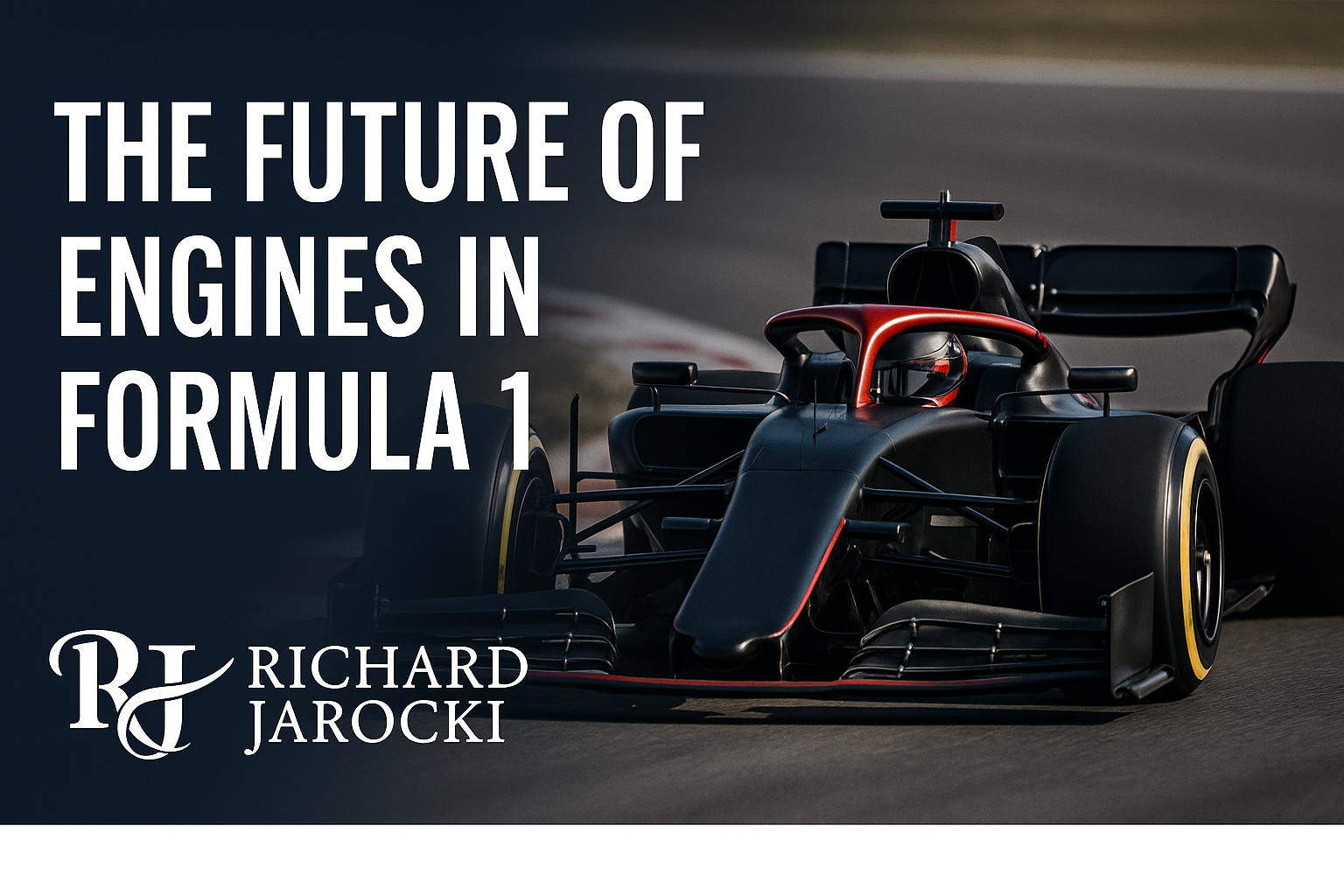
1. Background — Why F1 Swapped V8s for V6 Hybrids
Between 2009 and 2013, F1 roared along to naturally aspirated V8s—a beloved era. But in 2014 the FIA shifted to 1.6L turbocharged V6 hybrids with energy recovery systems (MGU‑K and MGU‑H), aiming for efficiency, relevance to road tech, and sustainability (independent.co.uk, en.wikipedia.org). These units brought massive complexity and price tags – R&D skyrocketed to roughly $200 million per engine family, and individual units approached $1.8–2.1 million (reuters.com).
While eco‑friendly in theory, the hybrid V6s drew criticism: they muted engine notes, escalated budgets, and alienated fans longing for visceral engine sound and mechanical purity.
FIA President Mohammed Ben Sulayem has been thoroughly candid: the status quo is unsustainable. The current PU is “so complicated…and costly,” he says, advocating a switch to simpler, commercially viable V8s (reuters.com).
He’s not just talking praise—he’s presenting a timeline. A 3‑year window post‑2026 is plausible, with 2029 earmarked as the earliest possible revival, provided sustainable fuels and development timelines align .
Key arguments Ben Sulayem makes:
The 2026 regulations will usher in enhanced hybrid V6 units: more electric power, a shift to fully sustainable fuel, and reaffirmed manufacturer commitment (reuters.com, chelseamagazines.com, reuters.com). Auto heavyweights—Audi, Ferrari, Ford, GM, Honda, Mercedes, Red Bull, Sauber—have already pledged allegiance to the 2026 framework (reuters.com). That marks a collective commitment to the short‑term hybrid model before any pivot to V8.
Ben Sulayem’s 3‑year cushion after 2026 gives teams breathing room—but no guarantees. By 2029 the V8 would theoretically be ready to go…if budgets, development, and sustainable fuels cooperate.
Here’s where the hype bumps into reality:
a) Lifecycle Timelines: Pat Symonds, F1 Technical Chief, notes the 2026 era is a multi‑year cycle. Historically F1 engines stick around for twice their nominal lifespan (planetf1.com, independent.co.uk). Pushing for a discrete shift to V8 right after may disrupt this cycle and offer diminishing returns against the sunk cost of current PU development.
b) Manufacturer Priorities: New engine entrants—Cadillac (GM), Audi, Red Bull Powertrains—must amortize 2026 investment before pivoting engine suppliers or redirecting resources .
c) Sustainable Fuel Costs: Ben Sulayem flagged that sustainable fuel, crucial to any V8 plan, “is very expensive,” requiring caution . Whether refiners can produce lab‑grade fuels at scale and cost remains a test.
d) Financial Risks: Teams are strapped under cost caps. €200‑million R&D power units plus fuel costs add pressure. Any mandate for V8s would need carefully crafted floor pricing, tech freeze timelines, or FIA subsidies to ensure broad compliance.
Cadillac’s entry underscores the stakes. They'll run Ferrari engines in 2026 but aim to launch their own works power unit by 2029 (en.wikipedia.org). GM is investing $65–70M in engine plant infrastructure (300–350 staff) with another $75–80M in startup costs (en.wikipedia.org). That signals serious commitment—but if V8 doesn’t materialize, Cadillac risks stranded investment or a less compelling plug‑and‑play setup.
V8s aren’t the only twist in this saga. In 2026 F1 is moving to 100% sustainable drop‑in fuels, aiming for carbon neutrality by 2030 (racefans.net). But challenges are steep:
V8’s resurrection must ride on the back of these sustainable‑fuel foundations. If that pipeline stutters, the entire V8 plan collapses.
Milestone Ideal Timeline Risks & Challenges 2026 PU era launches 2026 season Major investments locked in Sustainable fuel 2026 fully – R&D ongoing Supply scale/energy density R&D + planning 2027–2028 Engine factory ops, man‑power Engine homologation By 2029 start Development delays, budget cap issues V8 rollout 2029 season Stakeholder buy‑in, PU freeze
Ben Sulayem is seeking a second term as FIA President, having declared his intention in May and credited his leadership with reversing FIA losses and guiding the regulatory roadmap—fuel shifts, engine vision, and Concorde Agreement renewal (reuters.com, reuters.com).
That ambitious plan now faces a potential challenge: Tim Mayer, ex‑F1 steward and Motorsport UK‑backed, has announced a candidacy, asserting FIA leadership is in crisis and transparency is lacking (reuters.com). Mayer’s campaign could reshape the roadmap or slow decision‑making, which may ripple into engine policy—even with existing consensus on 2026.
Let’s not sugarcoat: fans miss V8s. The V6 hybrids were criticized for being muted and cold. The return of the hollow growl of a 3.5–4.0L V8 on synthetics would bring back raw emotion, theatre, and aural spectacle. Ben Sulayem is well aware that bankable media rights and ticket demand hinge on sensation, not just efficiency .
But nostalgia can be a trap. There's a real risk of chasing the past at the expense of the future. A sudden throttle back on hybrid power or EV innovation to recapture a past sound isn't prudent. A better route: retain hybrid benefits AND layer in V8 character.
The FIA’s V8 revival plan is bold. Ben Sulayem is pushing the envelope—simplifying PU, cutting costs, adding sound, bolstering commercial appeal. With manufacturer structure in place (Cadillac, Audi, Red Bull), and sustainable fuel transitions underway, 2029 is a logical window.
But let’s be blunt:
My take? 2029 is a possible, not probable launch. Expect noise. Expect roadmap outlines and working groups. But the actual on‑track switch? It likely slips into the early 2030s—unless the next few years yield rapid fuel deployment, factory breakthroughs, and political clarity.
A V8 return would be a sonic and sentimental win for F1. But it can’t come at the cost of technology, budgets, or sustainability. If the FIA, teams, and sustainable‑fuel groups deliver the technical groundwork and manage budgets, F1 could have its V8 moment again—but don’t bet big unless:
In other words: F1 fans should hope—but fiscal, political, and technical realities say cautious optimism is the better approach.